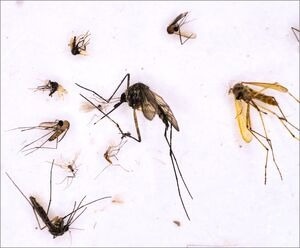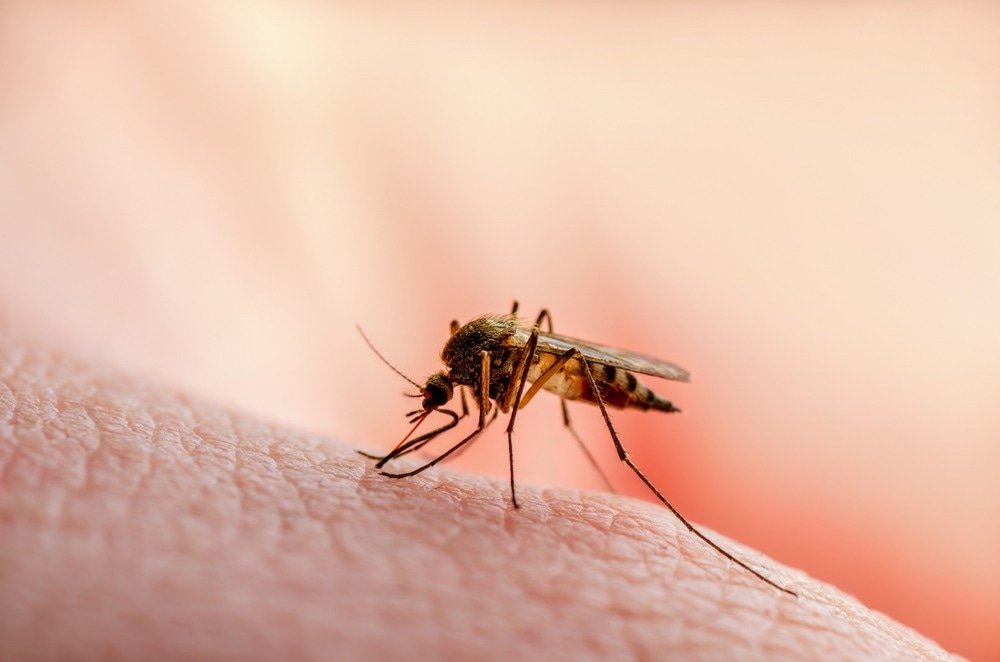How are environmental changes, biodiversity decline, and disease spread related? The solution is a riddle. The loss of tropical rainforests impairs the diversity of mosquito species, according to research from Charité-Universitätsmedizin Berlin and the Leibniz Institute for Zoo and Wildlife Research (Leibniz-IZW) published in the journal eLife on 26th September 2023.
 Mosquitoes collected, identified, and tested for viruses by the scientific team. Image Credit: Georg Eibner, Charité
Mosquitoes collected, identified, and tested for viruses by the scientific team. Image Credit: Georg Eibner, Charité
At the same time, more resilient mosquito species proliferate, which increases the number of viruses they carry. When a species has a large population, some viruses can spread very fast.
In their research, scientists from Charité and the Leibniz Institute for Zoo and Wildlife Research (Leibniz-IZW) looked into how clearing rainforests to make way for human settlements or coffee or cacao plantations affects the diversity and abundance of mosquitoes as well as the viruses they carry.

Image Credit: nechaevkon/Shutterstock.com
Prof. Sandra Junglen, director of the Ecology and Evolution of Arboviruses research group at the Institute of Virology at Charité, oversaw the project, which combines the areas of virology and biodiversity research.
The researchers began their investigation by catching mosquitos near Ta National Park in the West African country of Côte d’Ivoire. There are several lands uses there, ranging from pristine rainforest to secondary forest, cacao and coffee plantations, and settlements.
We identified the species of mosquitoes we had caught and tested them for viral infections. Then we looked at how the composition of mosquito species differs across the different land use types, where certain viruses are present, and how prevalent they are.”
Kyra Hermanns, Study First Author and PhD Student, Institute of Virology, Charité–Universitätsmedizin Berlin
Resilient Mosquito Species Prevail Over Others
A healthy environment, such as a pristine rainforest, has a diverse range of viruses. The major reason is that there are a variety of animal species living there that could transmit the virus and function as hosts. This is because viruses are constantly linked to their hosts.
According to Junglen, if the ecology changes, the viruses are also impacted.
We discovered 49 virus species, with the greatest diversity of hosts and viruses observed in untouched or minimally disturbed habitats.”
Sandra Junglen, Director, Ecology and Evolution of Arboviruses Research Group, Institute of Virology, Charité–Universitätsmedizin Berlin
The majority of the 49 distinct virus species were uncommon in the locations surveyed. However, nine of them were widely found in multiple habitats, with the incidence of five virus species increasing in disturbed environments and peaking in human settlements.
Junglen and Leibniz-IZW scientist Prof. Stephanie Kramer-Schadt stated, “This means that the clearing of tropical rainforests causes a decrease in the diversity of mosquito species, which changes the composition of host types. Some resilient mosquito species have multiplied very successfully in the cleared areas, bringing their viruses with them.”
Thus, the makeup of a specific species community has a direct impact on the prevalence of viruses.
The researcher further stated, “If one host species is very abundant, it is easier for viruses to spread. All of the viruses we found to be more common were demonstrated to be present in a certain mosquito species. The viruses belong to different families and have different properties. That means we were able to show for the first time that the spread of the viruses is attributable not to a close genetic relationship, but to the characteristics of their hosts – especially those mosquito species that adapt well to changing environmental conditions in habitats that have been disturbed.”
New Insight into the Dynamics of Infectious Disease
The viruses discovered by the researchers only infect mosquitos and, as of now, cannot be transferred to humans. Nonetheless, they provide a useful model for understanding how changes in the variety of a species community impact the presence and frequency of viruses.
Junglen noted, “Our study makes clear just how important biodiversity is, and that decreasing biodiversity makes it easier for certain viruses to thrive because it causes their hosts to become more abundant.”
She concluded, “Previously, these kinds of processes were studied almost exclusively using individual pathogens and individual hosts. Now we have a more complete picture that we can use for further research.”
The researchers intend to explore more habitats in other countries as their next step, with one objective being to define the specific parameters that impact the variety of mosquito species under land-use change, as well as the traits that viruses require to spread with their hosts.
Source:
Journal reference:
Hermanns, K., et al. (2023). Mosquito community composition shapes virus prevalence patterns along anthropogenic disturbance gradients. eLife. doi.org/10.7554/eLife.66550